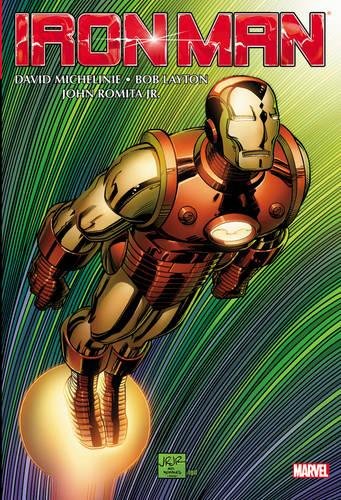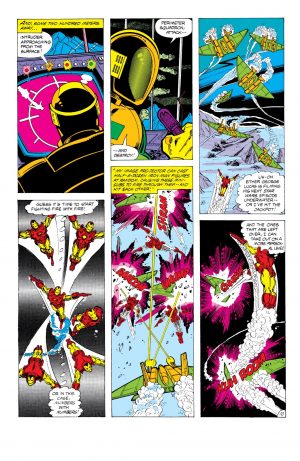Review by Ian Keogh
David Michelinie and Bob Layton began writing Iron Man in 1978, their appointment one issue after artist John Romita Jr signing on for his first regular series. By that point Iron Man had headlined his own comic for a decade, preceded by six years sharing the pages of Tales of Suspense, during which his adventures were almost universally lacklustre despite the creative talent involved. Michelinie, Layton and Romita Jr changed that. All were still relatively young, and looked at the world around them in 1978. The immediate result was Iron Man now resembled an up to date technological superhero and Tony Stark’s world as a millionaire businessman was no longer one of 1950s cocktail glamour, but one of contemporary elegance. For almost the first time since his origin, Iron Man felt modern. While Tony Stark’s perennial heart problems played a part, as did some cold war chest-beating, the concerns are far wider, and Stark’s influence global. His new girlfriend, Bethany Cabe glamorous and capable, and far more the role model for the 21st century Pepper Potts in the Iron Man movies than the genuine character was.
Several innovations would determine the approach of later creators. Micheline and Layton were the first to introduce the idea that Stark developed alternative Iron Man armour for specific tasks, and they kept abreast of real world technology, incorporating updates into Iron Man’s capabilities. However, their diligence in ensuring Iron Man and Stark were up to date in the late 1970s and early 1980s means on the surface at least, this content is very dated in terms of look and attitude. It’s also very much of its period for the writers plastering the art with unnecessary thought balloons and expository dialogue. Work past all that, and a lot of the stories themselves still hold up well. Two arcs have predominated in the memory. Toward the end there’s a two part confrontation with Doctor Doom in Camelot (paired with a later encounter as Doomquest), which is still unpredictable fun. More innovatively the writers investigate the human cost of Stark’s high level lifestyle and saddle him with alcoholism, collected as Demon in a Bottle. It now comes across as a problem all too easily solved in a single compressed episode, but the alcoholism would come to define Stark almost as much as his armoured identity.
Other sequences aren’t as highly regarded, possibly due to the involvement of other artists, but read very well. Two chapters of Iron Man taking on the Hulk, and a coda involving Ant Man are still tense, and a three part story involving industrial espionage twists nicely. Neither Jerry Bingham nor Layton, however, are Romita Jr. He’s still a long way from developing what would be his recognisably chunky style, but this is impressive art from a new artist. He has a great instinct for laying out a good looking superhero page, and there’s a clarity to his panels without short changing on detail.
Allowing for the styles of the times, much of the content still reads very well, but as an oversized hardcover, this is a premium item aimed at those who thrilled to the stories when first issued. Little is available elsewhere other than the collections noted above, covering less than a third of the run.

